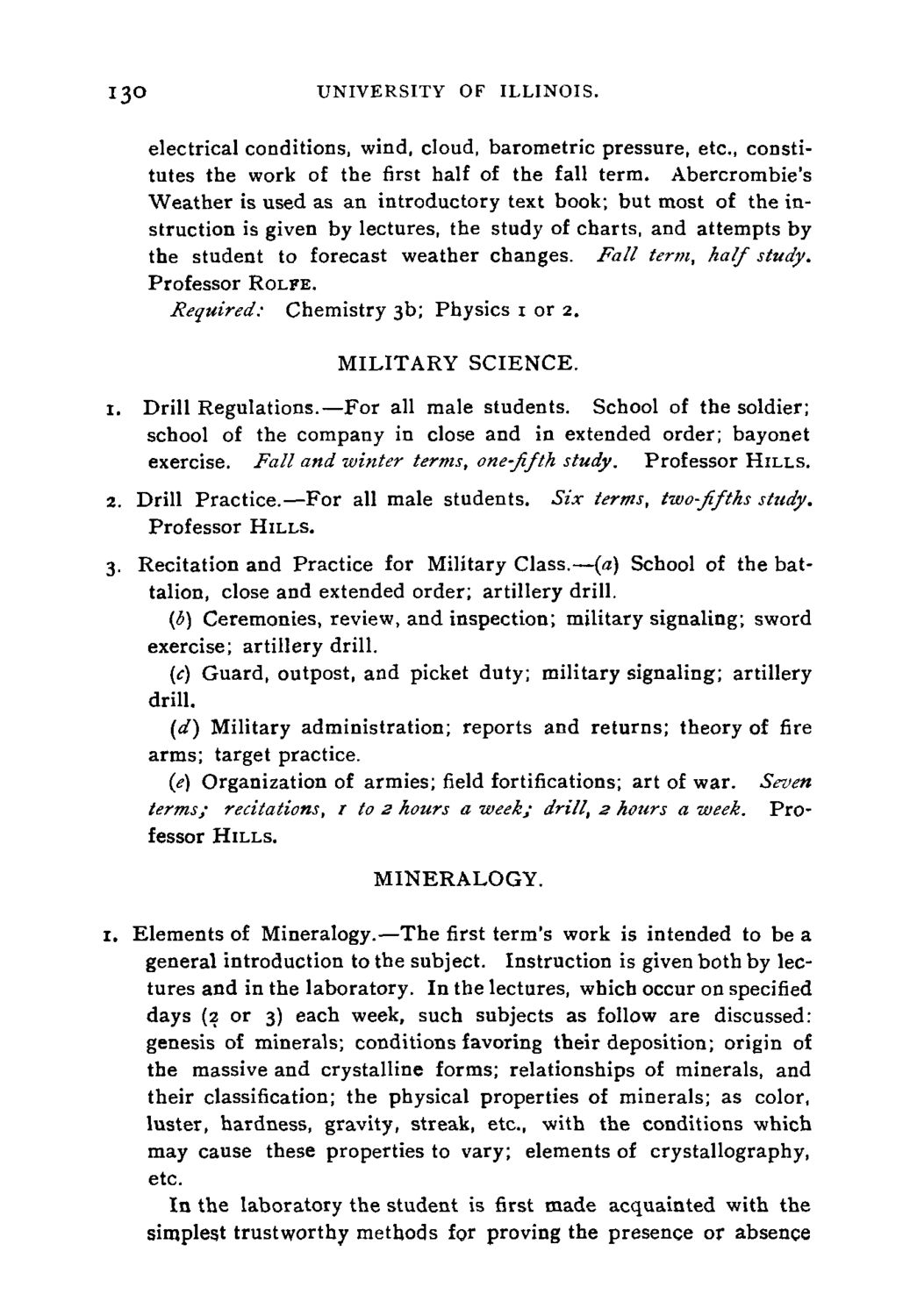| |
| |
Caption: Course Catalog - 1893-1894
This is a reduced-resolution page image for fast online browsing.

EXTRACTED TEXT FROM PAGE:
130 UNIVERSITY OF ILLINOIS. electrical conditions, wind, cloud, barometric pressure, etc., constitutes the work of the first half of the fall term. Abercrombie's Weather is used as an introductory text book; but most of the instruction is given by lectures, the study of charts, and attempts by the student to forecast weather changes. Fall term, half study. Professor ROLFE. Required: Chemistry 3b; Physics 1 or 2. MILITARY SCIENCE. 1. Drill Regulations.—For all male students. School of the soldier; school of the company in close and in extended order; bayonet exercise. Fall and winter terms, one-fifth study. Professor HILLS. Professor HILLS. 2. Drill Practice.—For all male students. Six terms, two-fifths study. 3. Recitation and Practice for Military Class.—(a) School of the battalion, close and extended order; artillery drill. (b) Ceremonies, review, and inspection; military signaling; sword exercise; artillery drill. (<r) Guard, outpost, and picket duty; military signaling; artillery drill. (d) Military administration; reports and returns; theory of fire arms; target practice. (e) Organization of armies; field fortifications; art of war. Seven terms; recitations, r to 2 hours a week; drill, 2 hours a week. Professor HILLS. MINERALOGY. 1. Elements of Mineralogy.—The first term's work is intended to be a general introduction to the subject. Instruction is given both by lectures and in the laboratory. In the lectures, which occur on specified days (2 or 3) each week, such subjects as follow are discussed: genesis of minerals; conditions favoring their deposition; origin of the massive and crystalline forms; relationships of minerals, and their classification; the physical properties of minerals; as color, luster, hardness, gravity, streak, etc., with the conditions which may cause these properties to vary; elements of crystallography, etc. In the laboratory the student is first made acquainted with the simplest trustworthy methods for proving the presence or absence
| |